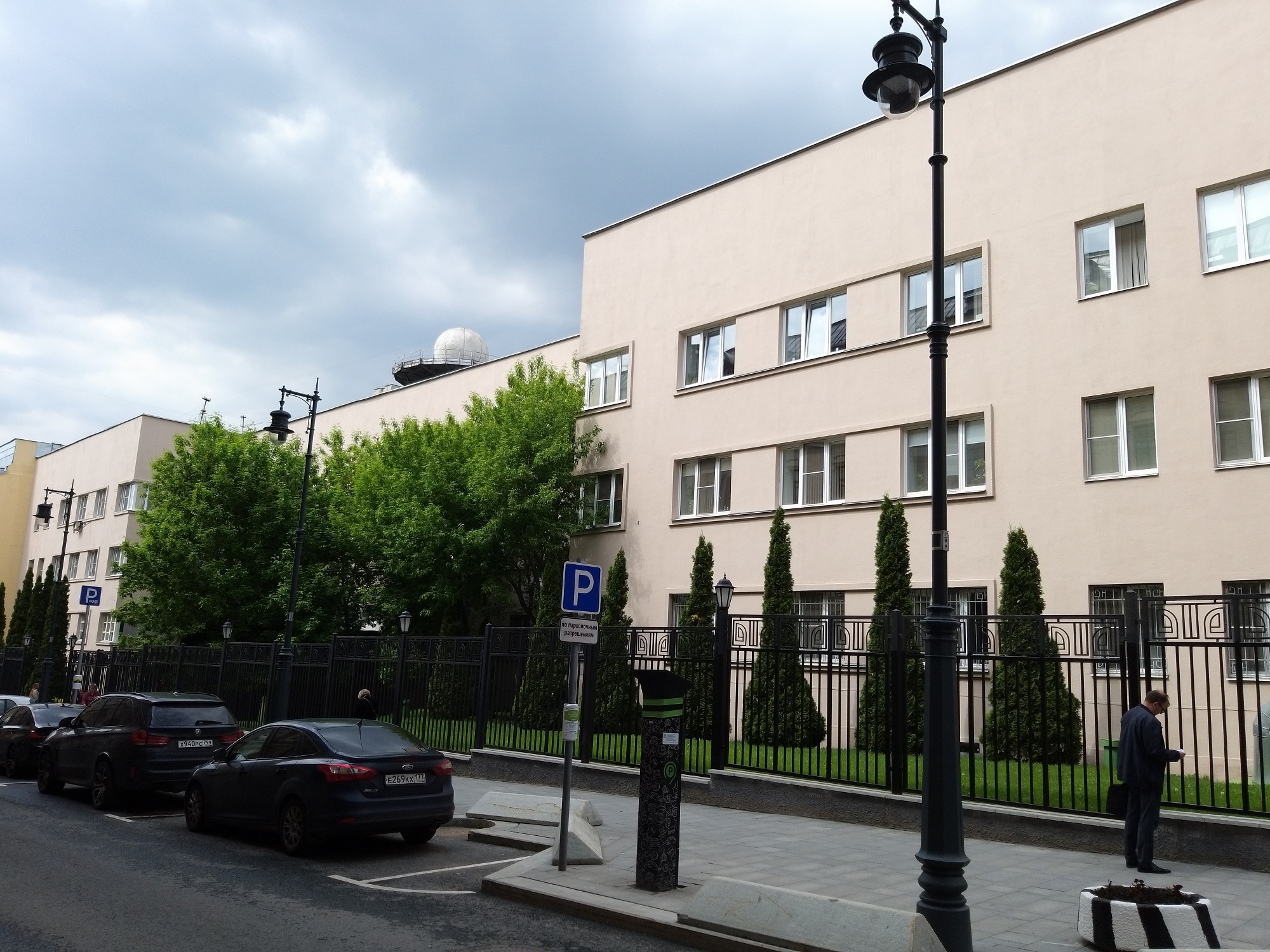Информация о здании
В 1862 г. в Малом Златоустинском переулке, рядом с хозяйственными воротами Златоустовского монастыря, было построено двухэтажное здание с проездной аркой (в начале ХХ в. арка была заложена). За домом закрепилось название «келейный корпус», так как он состоял из множества изолированных комнат (келий), но был предназначен не для монахов, а для сдачи внаём. Разрушив монастырь, большевики сохранили это здание как не имеющее прямого отношения к религии. Здесь были устроены коммунальные квартиры, затем в течение нескольких десятилетий находились службы ЖКХ.
Но по воле истории именно здесь началось возрождение памяти о Златоустовском монастыре. Сначала переулку вернули его историческое название (с 1923 по 1994 гг. он именовался Малым Комсомольским), а в 2006 г. келейный корпус был передан храму Космы и Дамиана на Маросейке, и сегодня здесь находится дом причта. При храме создан Центр изучения истории и наследия Московского Златоустовского монастыря. Благодаря его деятельности, обитель выходит из забвения.
С 2011 г. в келейном корпусе ежегодно проводятся общероссийские «Златоустовские чтения».
В 2016 г. здесь открылась часовня во имя Иоанна Златоуста, где каждую пятницу служится молебен святителю с чтением акафиста перед иконой Божией Матери «Знамение».
В 2018 г. во дворе келейного корпуса, рядом с фундаментом разрушенной Благовещенской церкви, установлены стенды с информацией о главном ктиторе монастыря, сподвижнике Петра I, одном из создателей российского военно-морского флота, генерал-адмирале Ф.М. Апраксине, который был похоронен в родовой усыпальнице под Благовещенским храмом.
В 2019 г. открылся музей Златоустовского монастыря. Его экспонаты находятся как в келейном корпусе, так и на территории обители: Памятный камень в Большом Златоустинском переулке, инсталляция монастырской ограды, башенка, лапидарий, фрагменты исторических построек.
В рамках программы "Моя улица" в 2018 г. в Малом Златоустинском переулке была проведена масштабная спасательная археология, которая принесла новые открытия: выявлены часть монастырской стены XVIII в., фундаменты келий и кузницы. В ходе реализации программы келейный корпус обрёл вторую молодость: крыша заново перекрыта, фасад обновлён, отреставрирован белокаменный цоколь, восстановлено историческое мощение тротуара. Вслед за этим явился и Хозяин этого святого места: в проёме арки была поставлена икона святителя Иоанна Златоуста в полный рост. Перед ней горит неугасимая лампада.
Автор статьи









